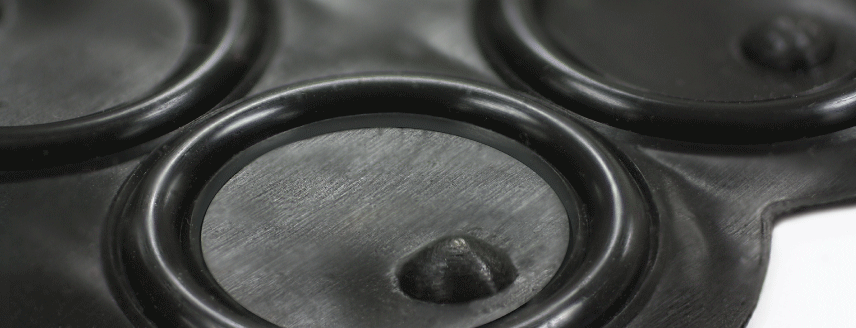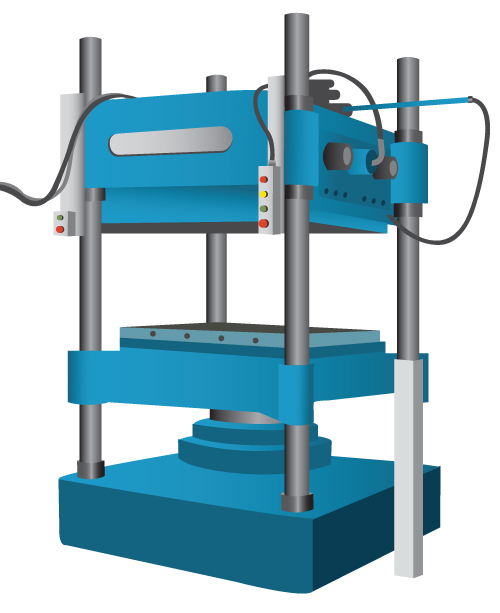 Technically Speaking Compression Moulding |
|
 | |
This edition of Technically Speaking will continue with the second installment in a six part series on moulding techniques. The first installment introduced five different types of moulding techniques, along with some advantages and disadvantages of each. This installment will discuss compression moulding techniques. | |
| Compression moulding is the least complex of the moulding techniques. The compression moulding press is made up of two plates, removable moulds consisting of two or more plates or inserts, and hydraulic rams. An uncured rubber pre-form of a specific shape and weight is placed between the plates. Depending on the part being moulded, the pre-form can be a rubber blank, a strip of rubber, or a sheet of rubber. Once the mould is closed, heat and pressure is applied to the rubber, forcing the material into the mould’s cavity. Excess material which flows into the flash and tear trim gates must later be trimmed to complete the finished part.
Curing of the rubber takes place as soon as the material begins to flow. Depending on the rubber being moulded and complexity of the part, aspects of the moulding process, such as temperature, curing time, and pressure used will vary. This moulding process works best when a hardness between 60 shore A and 90 shore A is required. Compression moulding can be used to create simple parts, such as O-rings, to more intricate parts, such as a mud motor boot. This moulding technique is ideal for manufacturing low quantity or large diameter components. The most well-known sealing component manufactured by compression moulding is the O-ring. Some O-ring moulds may produce upwards of a thousand O-rings in as little as 60-90 seconds. Hi-Tech Seals works with a select group of manufacturers, specialized in unique materials/compounds, dimensional parameters, and moulding techniques to bring our clients the best option for their application. The next installment of this six part series on moulding techniques will discuss injection moulding. |  |